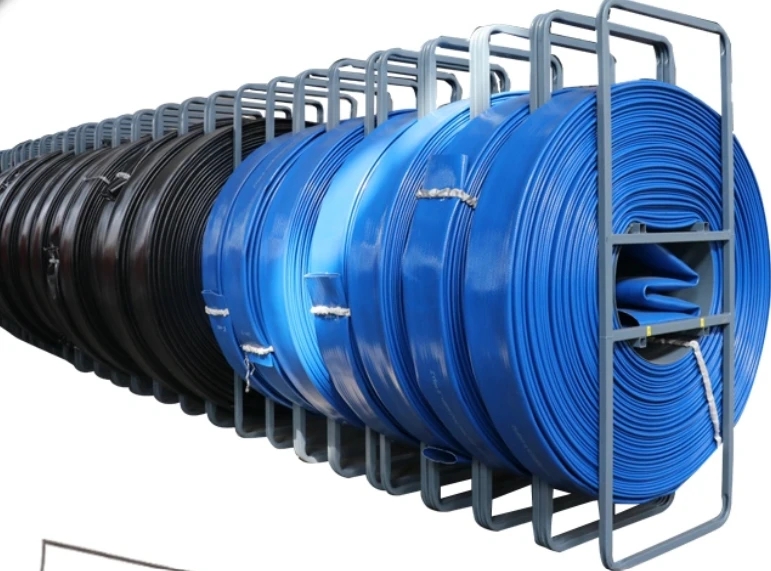lpg gas hose regulations
LPG Gas Hose Regulations Ensuring Safety and Compliance
Liquefied Petroleum Gas (LPG) is widely used in residential, commercial, and industrial applications due to its efficiency as a fuel source. However, the safe transport and use of LPG depend heavily on the integrity of the gas hoses used in various systems. Therefore, LPG gas hose regulations play a crucial role in ensuring safety and preventing accidents. This article explores the importance of these regulations, key standards, and best practices for compliance.
The Importance of LPG Hose Regulations
LPG hoses are critical components in the transport of gas from storage tanks to appliances. Given the flammable nature of LPG, any leak or failure in the hose can lead to catastrophic incidents, including explosions, fires, or environmental hazards. Thus, regulations govern the materials, design, testing, and maintenance of LPG gas hoses to mitigate these risks.
These regulations aim to protect not only the users but also the environment. By adhering to established standards, stakeholders can ensure that gas systems operate safely, thereby minimizing the chances of leaks and accidents. Furthermore, compliance with regulations is often a legal requirement, meaning that non-compliance can result in serious legal repercussions, including fines and increased liability in the event of an accident.
Key Standards and Regulatory Frameworks
Various organizations and governments have established standards governing the production and use of LPG hoses. In the United States, for example, the American National Standards Institute (ANSI) and the National Fire Protection Association (NFPA) have developed guidelines to ensure safety. The ANSI/UL 569 standard specifies the requirements for hose assemblies used with LPG, focusing on factors such as temperature resistance, pressure ratings, and performance under various conditions.
In Europe, the EN 1763 standard outlines similar requirements, emphasizing the need for hoses to withstand high temperatures and pressures typically associated with LPG use. Compliance with these standards involves rigorous testing and certification processes, ensuring that hoses can safely contain gas without risk of failure.
Material Requirements
The materials used in the production of LPG hoses are critical to their performance and safety. Hoses should be constructed of materials that are resistant to the corrosive effects of LPG, as well as physical stress. Commonly used materials for LPG hoses include rubber compounds and thermoplastic materials, chosen for their resilience and flexibility.
lpg gas hose regulations

Moreover, hoses must be tested for durability against factors such as UV exposure, ozone compatibility, and extreme temperatures. This ensures that they can withstand the environments in which they will be used without degrading or becoming brittle, which could lead to leaks.
Best Practices for Compliance and Safety
To ensure compliance with LPG gas hose regulations, it is essential for users and suppliers to adopt best practices. Here are some recommendations
1. Regular Inspections Conduct routine inspections of LPG hoses for signs of wear, cracks, or leaks. Any compromised hose should be replaced immediately to prevent accidents.
2. Proper Installation Follow manufacturer guidelines for installation to ensure hoses are correctly fitted and secured. Improper installation can lead to undue stress on the hose, increasing the risk of failure.
3. Training and Awareness Ensure that all personnel involved in handling LPG systems are trained in safety protocols and aware of the potential hazards associated with LPG gas.
4. Documentation and Records Maintain accurate records of all inspections, maintenance, and replacements. Documentation is essential for compliance and can serve as evidence in case of incidents.
5. Use Certified Products Always select LPG hoses that conform to relevant standards and are certified by recognized testing organizations. This guarantees adherence to safety regulations and performance standards.
Conclusion
LPG gas hose regulations are vital for ensuring the safe transport and use of liquefied petroleum gas. Compliance with these regulations protects users, the environment, and reduces the risk of accidents. By adhering to established standards, utilizing suitable materials, and following best practices, stakeholders can maintain safety and efficiency in LPG systems. Ultimately, the collective responsibility of manufacturers, suppliers, and users is to foster a culture of safety that underpins the usage of LPG in various applications.
-
Top Quality Oxy Acetylene Hoses for Sale Fit for Welding DemandsNewsJul.28,2025
-
The Future of Pneumatic Air Tubes in IndustryNewsJul.28,2025
-
Superior and Reliable LPG Hose Pipe Solutions for Every NeedNewsJul.28,2025
-
Exceptionally Durable and Versatile Premium Braided PVC TubingNewsJul.28,2025
-
Best Adapters for Connecting Garden Hose to PVC Pipe ConnectionsNewsJul.28,2025
-
The Essential Role of LPG Hoses in Safe and Efficient Gas DistributionNewsJul.16,2025














